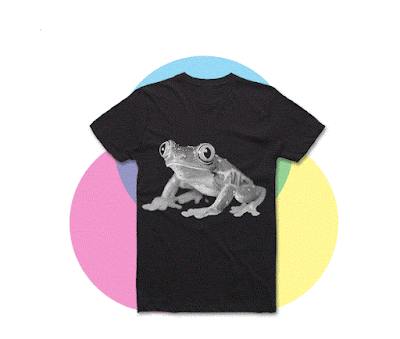DTG Innovation through the Eyes of SMB: Learn Top 3 Reasons Entrepreneurs Go Digital
 Silkscreen
technology remained untouchable until rival digital printing emerged in 1996. Now, nearly every apparel graphics designer
wants to tap into digital printing, particularly the DTG (Direct-to-garment)
model. It's addressed many of the long-existing challenges traditional methods
presented. What would one give to lessen frustrations and enjoy a smoother
operation? Well, they've introduced DTG
printing just in time. The hurdle the
average apparel graphics designer now face is to learn the best practices of
DTG printing. As a method that's constantly evolving, DTG has a promising
future. In garment printing, it dominates with speed, precision and the ease of
installation. It accelerates production and smooths the process of order
fulfillment as machines take over with computerized artwork.
Silkscreen
technology remained untouchable until rival digital printing emerged in 1996. Now, nearly every apparel graphics designer
wants to tap into digital printing, particularly the DTG (Direct-to-garment)
model. It's addressed many of the long-existing challenges traditional methods
presented. What would one give to lessen frustrations and enjoy a smoother
operation? Well, they've introduced DTG
printing just in time. The hurdle the
average apparel graphics designer now face is to learn the best practices of
DTG printing. As a method that's constantly evolving, DTG has a promising
future. In garment printing, it dominates with speed, precision and the ease of
installation. It accelerates production and smooths the process of order
fulfillment as machines take over with computerized artwork.
Customization beyond Limits
Largely,
DTG digital printing allows a designer to exploit naked creativity. This has
unequivocally shaped the market for the next couple of years. When measuring
compatibility, digital DTG printing is ideal for promotional and marketing
campaigns. It allows single t-shirt printing using custom designs and variable
messages. This made-to-order strategy puts a lid on wastage, quickens order
processing and curtails long-term operating cost. Imagine the revenue
projections of a company that's selling every product produced. Although micro
t-shirt startups and medium-sized companies thrive on the on-demand DTG
printing model, its evolution is continuous. What's also fascinating is that
one doesn't need masterclass skills to operate a DTG printing business. Even
fairly inexperienced entrepreneurs have established legitimate t-shirt printing
startups and are doing extremely well at it. The use of modified inkjet
technology to print on textile eliminates time-intensive routines and still
delivers impeccable prints.
Transferring the Perfect Image Using DTG
Inkjet
Getting the
image transferred to the material is a tricky process. One reason that makes it
somewhat difficult is that the preferred textiles have an intricately woven
nature. That said, having the right transport mechanism and resources matters
greatly if one desires optimal results. The industry has long needed a
technique that made fabric fibers absorb inks better and preserved the
integrity of the printed artwork. In every way, DTG printing optimizes
effectiveness and improves overall quality. If the material is darker, priming
(pretreating) works best to bind the surfactant and ink together properly.
What's more, this model isn't limited to just a few fabric types. Lately,
printing on Poly blends and other synthetic materials has become the norm.
Substrates such as silk and leather have been added to the mix as well.
Low Capital Business Instant Profit
For more information about digital printers, inks, platens go through this URL: https://www.belquette.com/index.php/connect/bq-blog/bqweblog/entry/5-things-to-know-about-dtg-printing-written-by-a-dtg-beginner



Comments
Post a Comment